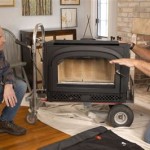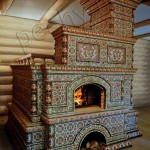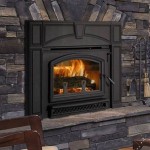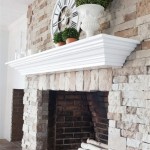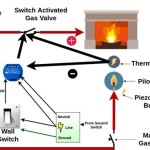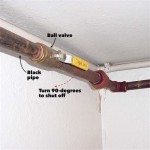Pilot Light Gas Fireplace Will Not Stay Lit: A Troubleshooting Guide
A gas fireplace offers warmth and ambiance with the convenience of a switch. However, a common issue is the pilot light failing to stay lit. This can be frustrating, especially when the fireplace is needed most. Understanding the potential causes and troubleshooting steps is crucial for restoring functionality. This article provides a comprehensive guide to diagnosing and addressing the problem of a pilot light that refuses to remain ignited in a gas fireplace.
The pilot light is a small, continuous flame that ignites the main burner in a gas fireplace. It's a safety feature designed to ensure that gas doesn't accumulate and create a hazardous situation. When the pilot light goes out, the fireplace's safety mechanisms shut off the gas supply, preventing leaks. A pilot light that repeatedly extinguishes indicates an underlying problem that needs to be addressed. Ignoring this issue can lead to inconvenience and, in rare cases, potentially dangerous situations.
Before attempting any troubleshooting, it's important to ensure safety. Turn off the gas supply to the fireplace. This is typically done via a valve located near the fireplace or at the main gas meter. Allow the area to ventilate for a few minutes to dissipate any accumulated gas. If there is a strong smell of gas, evacuate the area immediately and contact the gas company or a qualified technician.
Thermocouple or Thermopile Malfunction
The thermocouple or thermopile is a crucial component responsible for sensing the pilot light flame. It's a safety device that generates a small electrical current when heated by the pilot flame. This current keeps the gas valve open, allowing the pilot light to continue burning. If the thermocouple or thermopile fails to produce sufficient current, the gas valve will close, extinguishing the pilot light.
Several factors can cause a thermocouple or thermopile to malfunction. Age and corrosion are common culprits. Over time, the sensor can degrade, reducing its ability to generate electricity. Soot or debris buildup on the sensor can also impede its function by insulating it from the flame. Physical damage, such as bends or breaks in the sensor, will render it ineffective.
To test the thermocouple or thermopile, a multimeter is required. With the pilot light lit, measure the voltage being produced by the sensor. The specific voltage requirements vary depending on the fireplace model, so consult the manufacturer's specifications. If the voltage is significantly lower than the specified range, the thermocouple or thermopile is likely faulty and needs replacement.
Replacing the thermocouple or thermopile is a relatively straightforward process. First, turn off the gas supply and allow the fireplace to cool completely. Locate the thermocouple or thermopile near the pilot light assembly. Disconnect the wires connecting the sensor to the gas valve. Remove the old sensor and install the new one, ensuring it's properly positioned in the pilot flame. Reconnect the wires and turn the gas supply back on. Attempt to relight the pilot light following the manufacturer's instructions.
Dirty or Blocked Pilot Orifice
The pilot orifice is a small opening in the pilot light assembly that controls the flow of gas to the pilot flame. Over time, this orifice can become clogged with dust, debris, or corrosion. A partially or completely blocked orifice restricts the gas flow, resulting in a weak or unstable pilot flame that is easily extinguished.
Symptoms of a dirty or blocked pilot orifice include a small, yellow, or flickering pilot flame. The flame may also be inconsistent or difficult to light. In severe cases, the pilot light may not light at all. Inspecting the pilot flame can provide valuable clues about the condition of the orifice.
Cleaning the pilot orifice requires caution and precision. First, turn off the gas supply and allow the fireplace to cool. Locate the pilot assembly and carefully remove the pilot orifice. Use a small wire or a specialized pilot orifice cleaning tool to gently clear any obstructions from the opening. Avoid using excessive force, as this can damage the orifice. Compressed air can also be used to blow out any remaining debris.
After cleaning the pilot orifice, reinstall it in the pilot assembly. Ensure it's securely tightened. Turn the gas supply back on and attempt to relight the pilot light. Observe the pilot flame to ensure it's clean, strong, and stable. If the flame remains weak or unstable, the orifice may be damaged or require further cleaning.
Gas Pressure Issues
Inadequate gas pressure can also cause the pilot light to extinguish. The gas pressure within the fireplace system must be within a specific range to ensure proper operation. Low gas pressure can result in a weak pilot flame that is susceptible to drafts or minor disturbances. High gas pressure can lead to an unstable or excessively large flame that can also be prone to extinguishing.
Several factors can contribute to gas pressure issues. Problems with the main gas supply line, such as leaks or restrictions, can affect the pressure reaching the fireplace. A faulty gas regulator, either at the main gas meter or within the fireplace itself, can also cause pressure fluctuations. Other appliances connected to the same gas line may also draw excessive gas, reducing the pressure available to the fireplace.
Measuring gas pressure requires specialized tools and expertise. A manometer is used to accurately measure the gas pressure at the fireplace. The specific pressure requirements vary depending on the fireplace model, so consult the manufacturer's specifications. It is highly recommended that a qualified gas technician perform gas pressure testing and adjustments, as improper handling can be dangerous.
If low gas pressure is suspected, check for any obvious leaks or restrictions in the gas supply line. Ensure that the gas meter is functioning correctly and that other appliances are not drawing excessive gas. If high gas pressure is suspected, the gas regulator may need adjustment or replacement. In either case, it's crucial to involve a qualified technician to diagnose and resolve the underlying issue.
In addition to these primary causes, other factors can contribute to a pilot light that won't stay lit. Drafts from windows, doors, or ventilation systems can extinguish the pilot flame. Improper venting of the fireplace can also affect the flame stability. A faulty gas valve can prevent sufficient gas flow to the pilot light. Ensure that the fireplace area is adequately sealed and that the venting system is clear of obstructions. Inspect the gas valve for any signs of damage or malfunction. If these issues are suspected, addressing them may resolve the pilot light problem.
Troubleshooting a gas fireplace pilot light that won't stay lit requires a systematic approach. Start with the simplest checks, such as inspecting the pilot flame and cleaning the pilot orifice. If these steps don't resolve the issue, move on to more complex tasks, such as testing the thermocouple or thermopile. Always prioritize safety and consult the manufacturer's instructions. When in doubt, contacting a qualified technician is recommended to ensure proper diagnosis and repair.
Regular maintenance can prevent many of the problems that cause a pilot light to extinguish. Cleaning the pilot assembly and checking the thermocouple or thermopile periodically can help ensure reliable operation. A qualified technician can perform a more thorough inspection and maintenance service, including checking gas pressure and venting. Following these preventative measures can extend the life of the fireplace and minimize the likelihood of pilot light issues.

Gas Fireplace Won T Stay Lit Magic Touch Mechanical

Fireplace Won T Stay Lit This Is How You Fix It

Gas Fireplace Won T Stay Lit Magic Touch Mechanical

Gas Fireplace Pilot Light Won T Stay Lit Easy Fix

How To Fix A Gas Fireplace Pilot Light That Does Not Stay Lit Troubleshooting And Repairing

Gas Fireplace No Flame How To Fix Works On Most Brands

How To Fix A Gas Fireplace Pilot Light That Does Not Stay Lit Troubleshooting And Repairing

My Gas Fireplace Won T Stay Lit Here S The Fix

Reasons Your Gas Fireplace Isn T Working Experts
My Gas Fireplace Pilot Light Works Perfectly However When I Flip The Switch For Rest Of To Turn On Nothing Happens What Quora

